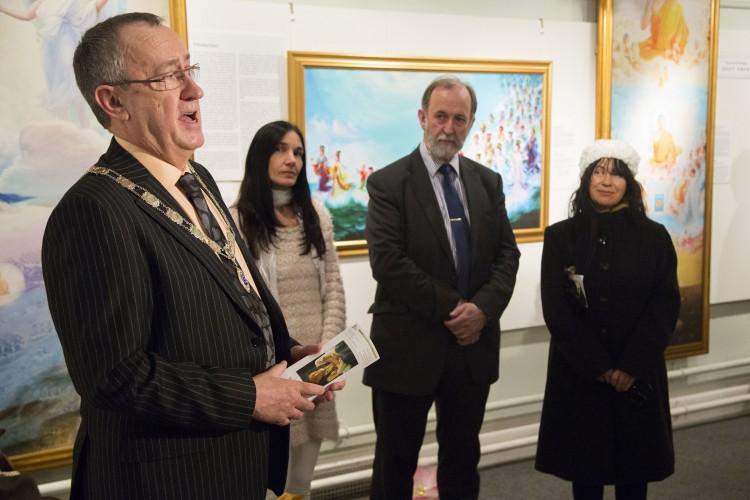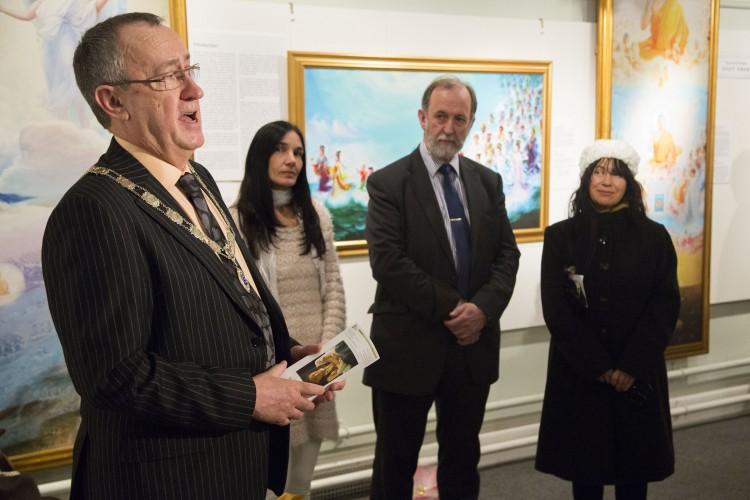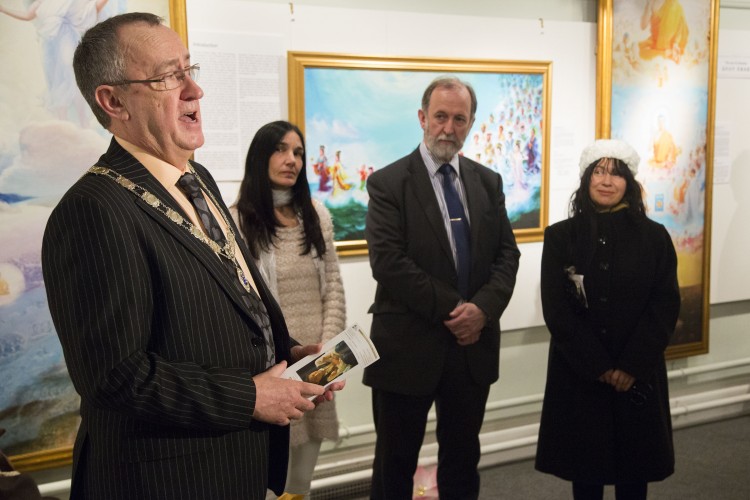The Art of Zhen Shan Ren International Exhibition has toured the world since 2004. It came for a month-long stay at the Kingston Museum in the tree-lined south of London, UK, at the end of January.
The Deputy Mayor of the Royal Borough of Kingston Upon Thames, Cllr Barry O'Mahony, opened the exhibition.
He comes from the Republic of Ireland where the national religion is Roman Catholicism, the world’s largest Christian Church.







